A small reflection to start, on living in this universe.
Albany to Perth via Lake Towerrinning, Darkan, Williams
When you get out of the car to take pictures of rural countryside, there is another recurring theme – litter. Wherever Homo colossus goes, a trail of pollution is left behind. You’d think it would be a small thing to take responsibility for your own rubbish. Yet many people simply toss food wrappers, drink bottles and general rubbish out of the car window instead of taking it home to at least put into their bins. They also throw rubbish onto beaches and streets, into lakes and forests, in fact anywhere they go.
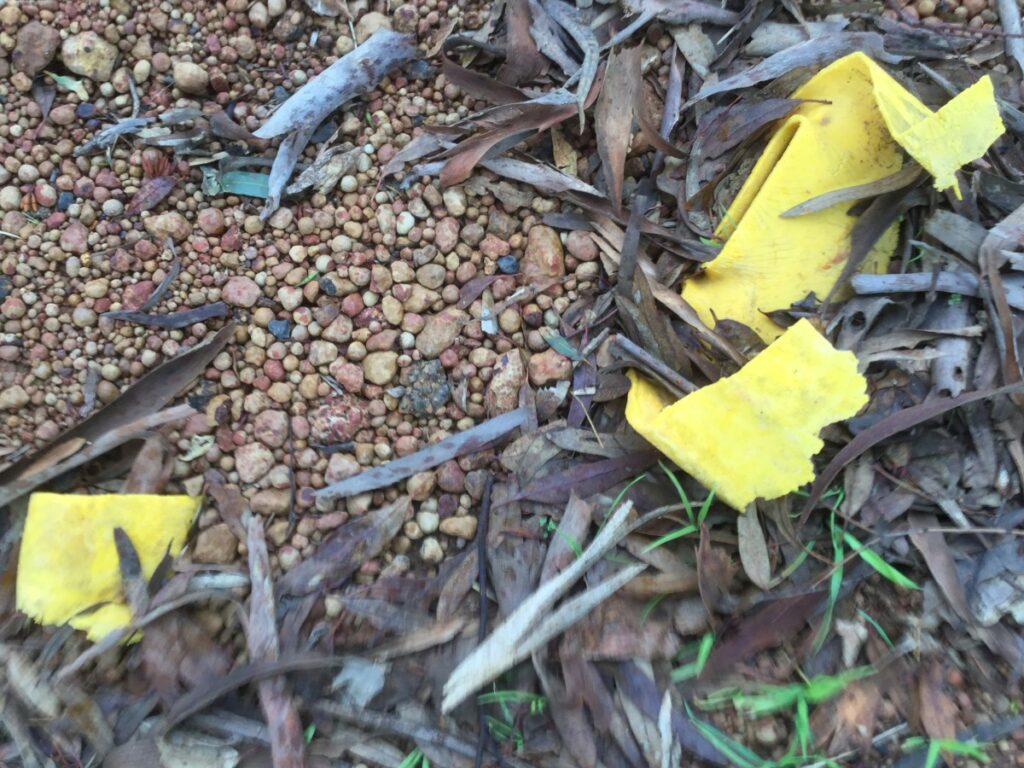
Some people I have talked to about this say I’m making a mountain out of a molehill. It’s such a small thing, am I perfect, etc. But it is not a small thing. I’m not perfect but you don’t have to be to take full responsibility for your rubbish at all times. THAT is the small thing. The rest is the lame excuse. We now have more plastic in the sea than plankton by weight and soon there will be more plastic than fish. Every roadside ditch I have ever seen is strewn with litter. It’s as if the planet is just a giant bin. Animals die painful deaths every day getting trapped in our rubbish or ingesting it. That is the collective result of lots of human beings making bad choices many many times, and pretending it’s nothing.
We will inescapably see more rubbish later. We always do. Meanwhile, in the next photograph of our backroads tour of one of the world’s great granaries there are two things to discuss: The detritus of what used to be living remnant vegetation in the foreground, and the vegetation behind the fence in the background. There are two kinds of vegetation that typically look like what you can see behind that fence: Degraded, grazed-out, passively cleared remnant vegetation, or plantation carbon capture projects that are used as an excuse for people to burn more fossil fuels, mine more land, push over more of the earth’s rapidly shrinking wild habitats. If you’ve ever paid more money to “offset” your flight, this is the sort of thing you’re paying for (if you’re lucky).
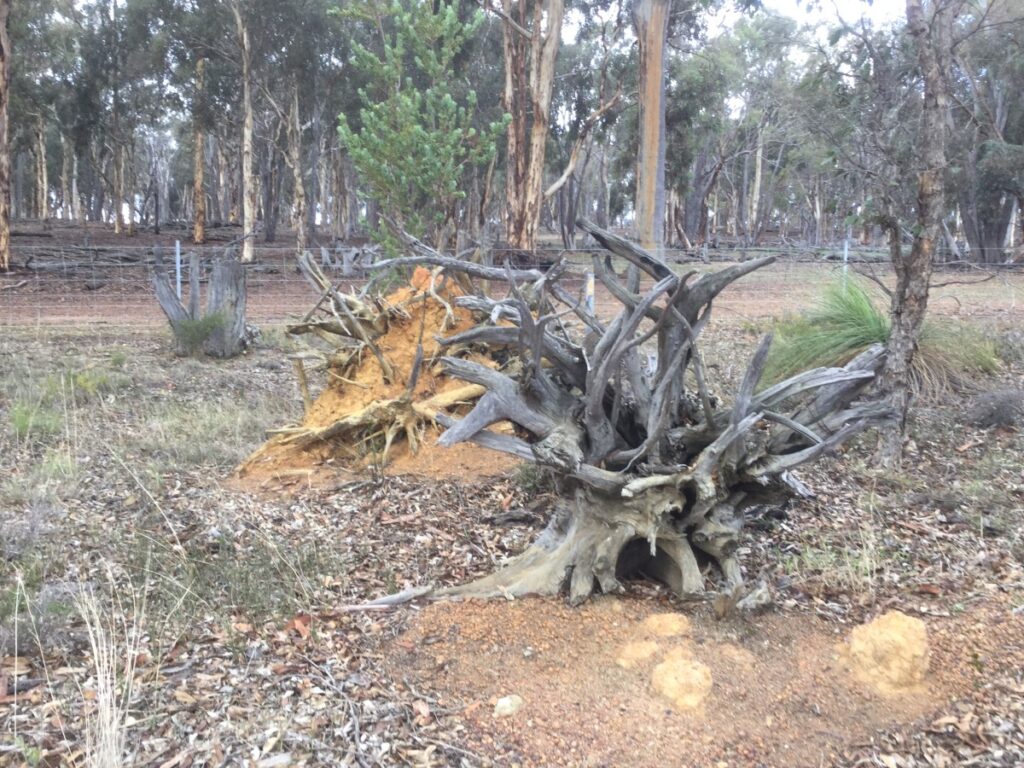
Neither of those have functional understorey. As discussed in the last instalment, most of the biodiversity in West Australian eucalyptus woodlands is in the natural understorey – both botanically, and in the fauna and microflora depending on that understorey. Compare the picture above to the one below to see what an uncleared native ecosystem looks like and what I mean by understorey. Many people living in this world never get to see what uncleared natural places look like. They can go into a timber plantation believing they are in a forest.

We remarked in the last instalment about the habit our culture has of turning natural streams and rivers containing and supporting wildlife and surrounded by biodiverse vegetation into glorified sewers running through degraded landscapes. Exhibit B below.
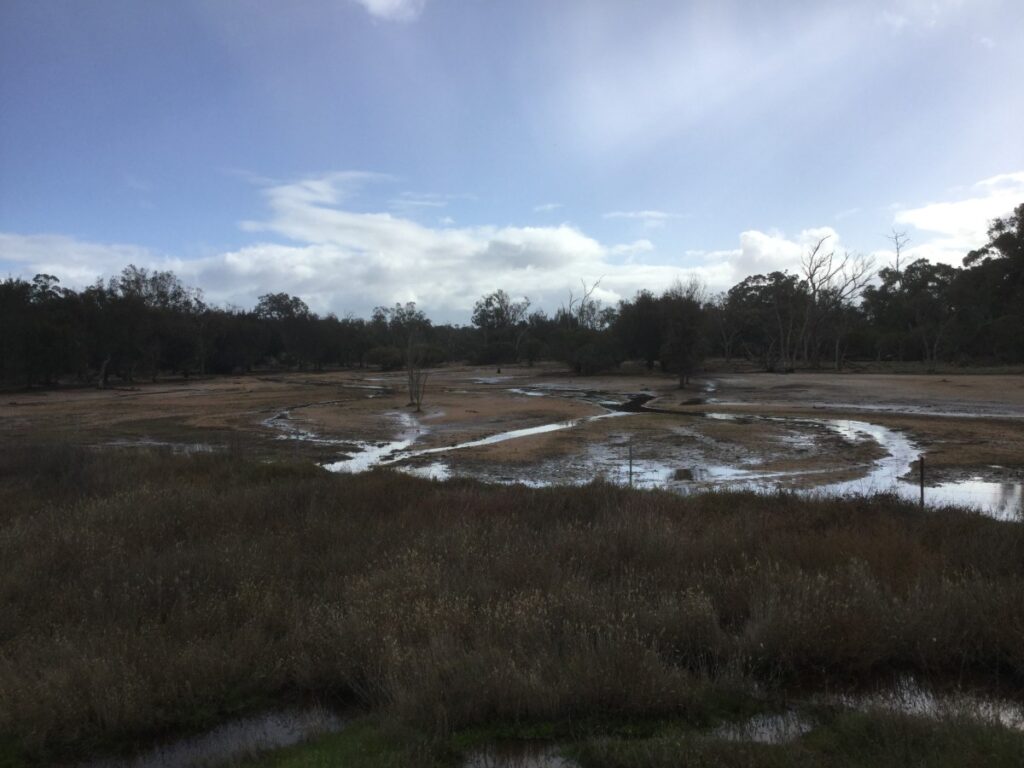
If you would like a reminder of what a stream zone should look like, you can go back to the last instalment and look at a proper riparian zone leading up to a natural stream in a conservation area.
When I was working in natural resource management in the mid-90s, one of the long-standing recommendations of my colleagues and myself was that all wetlands and watercourses in cleared land should be fenced out with generous margins and the riparian zones rehabilitated by protecting, encouraging and wherever necessary mass replanting suitable native vegetation. All land clearing is ecologically detrimental, but riparian zones are especially important. Terrestrial and aquatic life both are tied to water, so wetland and watercourse areas are priority conservation areas. Fish, amphibians, aquatic and terrestrial invertebrates, waterbirds, songbirds, reptiles, native mammals all depend on it.
And this is how we have treated those areas, once teeming with life – and I mean we, all of us, as a community not taking responsibility, not taking sufficient interest, turning a blind eye, making it someone else’s business, and indeed gaining from the ecocide amongst other things in comparatively cheap groceries at the price of biodiversity and the very future of many species currently clinging onto life on earth.
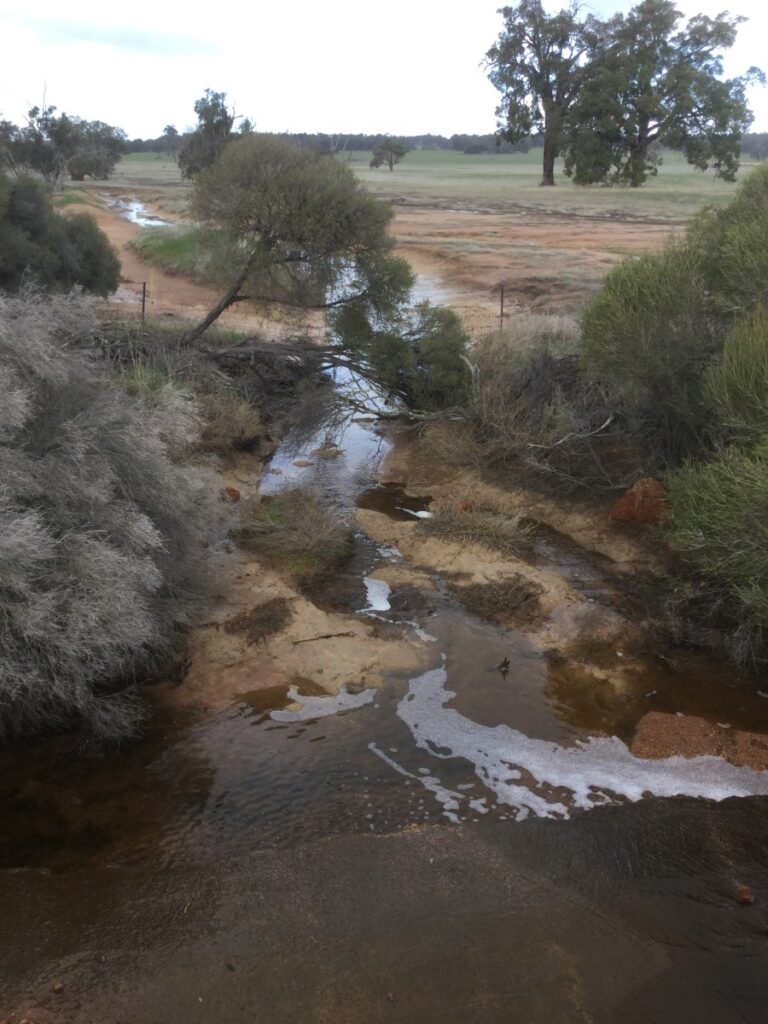
I listen to songs to process my grief. The music gives voice to the tears I have mostly locked inside. Anger is much easier to express; and express it we should, or it will turn inward into depression. It is right we should be angry, and it is right we should grieve. To do anything less is to be an automaton, a husk without a heart.
Even from a purely physical perspective, this watercourse above is no longer performing water filtration like a natural system. There is almost zero vegetation to reduce run-off or to filter out nutrients in it, so the fertilisers applied to the fields in our industrial farming system partly wash into the watercourses and wetlands, causing their eutrophication and the suffocation of more life down the track, as well as the demise of much terrestrial wildlife depending on that water.
It is extraordinary to me how Westerners bellyache about the quality of their tapwater, buy all sorts of filtration systems or bottled water from afar wrapped in single-use plastic or glass, and don’t spare a thought for the polluted water their actions condemn wildlife to drink and to live in. If humans were forced to drink unfiltered water from the waterways they pollute, then and only then might most of them think twice about what we are doing to the planetary life support systems as a culture.
Science now is nothing more than an ugly post-mortem conducted on a dead planet. The report will never be read.
(Donald McCarthy, Irish doomer)
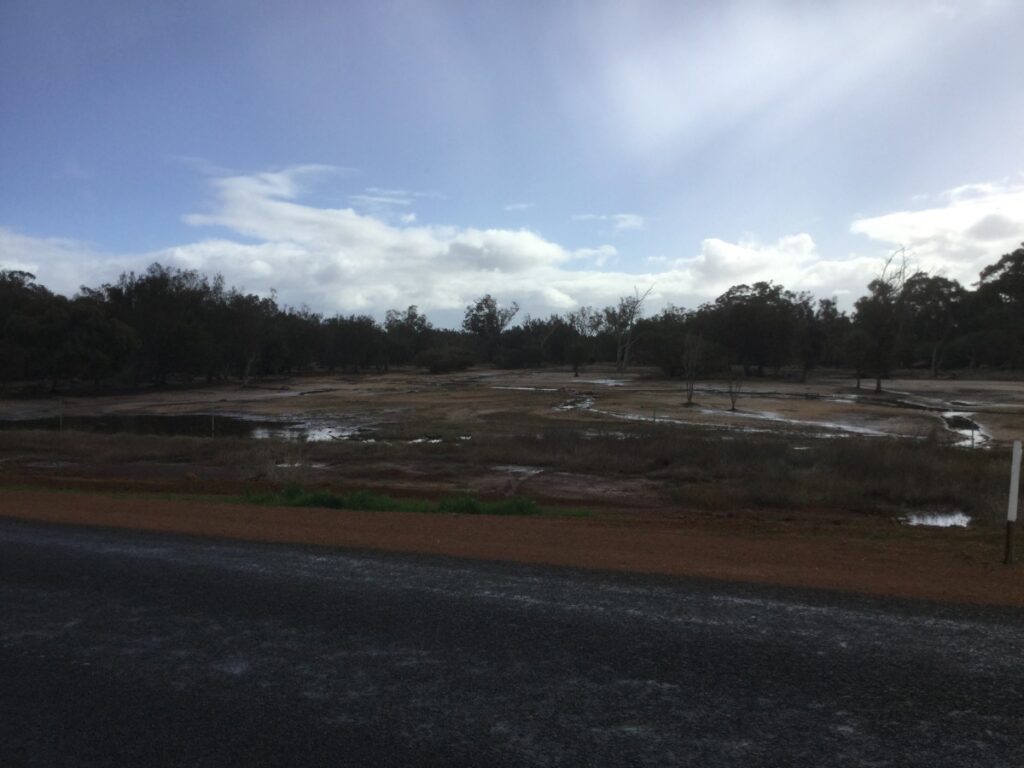
The soil erosion (from both water and wind) around these bare streamsides is obvious. Alongside the fertiliser in runoff, sediments will be washed into the streams and from there inlets and oceans. This has created another disaster capitalism industry – earthmoving “solutions” to problems that should be addressed at their origin; such as constant dredging of our already degraded waterways which destroys and disturbs yet more native vegetation and wildlife desperately clinging on where they can.
Not to mention billion-dollar “solutions” like the Dawesville Cut in Western Australia, which tragicomically scored 4.5 stars out of 5 from the public for tourism quality on Google Reviews. Instead of changing our destructive practices upriver, and reining in our abuse of the landscape there, the engineering “fix” to a badly polluted and choking Peel-Harvey Estuary was to create a large artificial channel into the ocean so that our pollution could be flushed more quickly into the marine ecosystem to be “dispersed” (much like plastic waste is “dispersed” in the ocean). In the estuary itself, the cut increased salinity, with ecological consequences to the survivors of the original suite of species which had once lived there. Since the adverse effects of our pollution had been greater than the adverse effects of the increased salinity, it was considered a win.
But it’s always a win for our culture when we get a band-aid solution that means we don’t have to change the destructive things we do, and the real reason anyone cared enough about the Peel-Harvey Estuary situation to find and apply such a band-aid solution is because of the prime waterfront properties and suburban subdivisions in the “developing” hinterland that could only be made profitable if the disgusting stench from the rotting algae and dead fish could be somehow eliminated.
Now people have what they want – coveted waterside real estate, Legoland suburbia behind it, jet skis and motor boats and yachts and jetties, new marinas, the inevitable golf course, resort hotels; and the cash in the kitty from carving up what used to be, when I first came to Australia, a biodiverse and reasonably intact riparian zone and wildlife refuge – from carving it up and selling it down the river for thirty pieces of silver as Homo colossus does with all of nature.
And instead of safeguarding and rehabilitating riparian zones everywhere, we have destroyed them both around the coastal estuaries and in the agricultural hinterland, and we are continuing to carve into and destroy riparian zones everywhere with our “development” AKA ecocide.
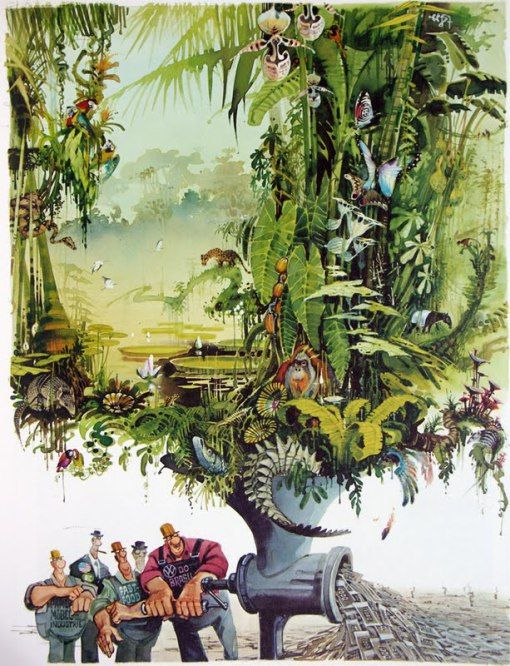
♦ ♥ ♦
Now I’m going to zoom in on a smaller matter, a particular human foible that those of you living in places more recently colonised by Western culture might have noticed in your own countries. If you’re from the US, Canada, New Zealand, South Africa, India etc, I’d love to know if this phenomenon looks familiar to you – tell me in the comments section!
Here are two photos of the front entrance to a rural property in Western Australia that we happened to drive by.
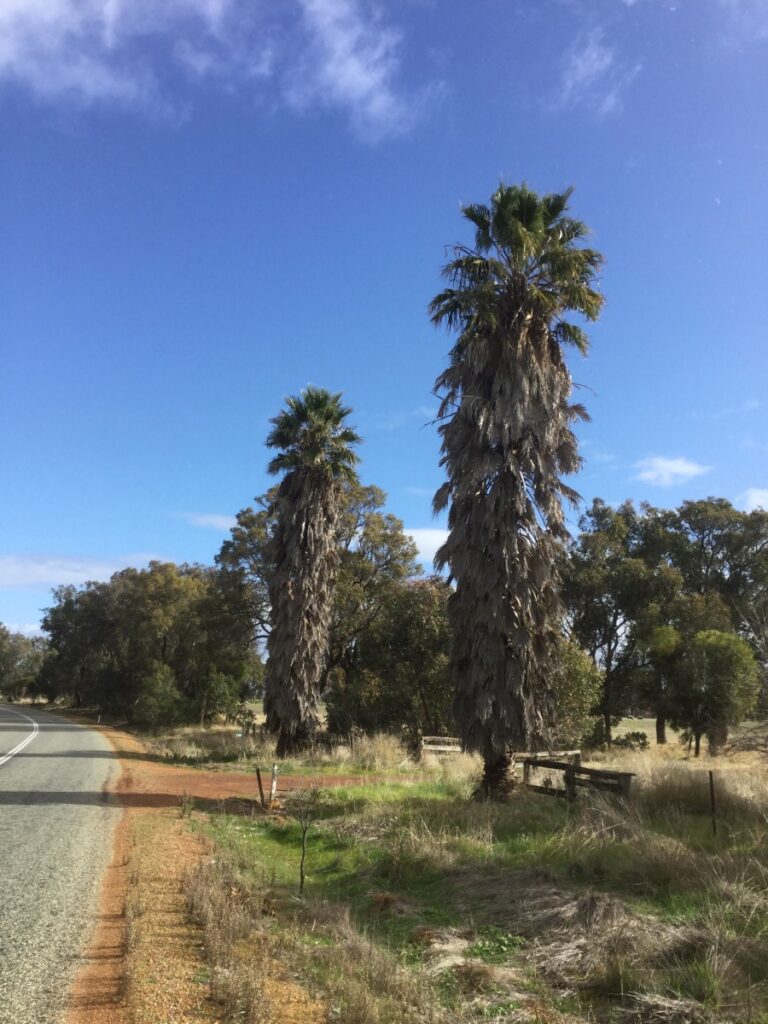
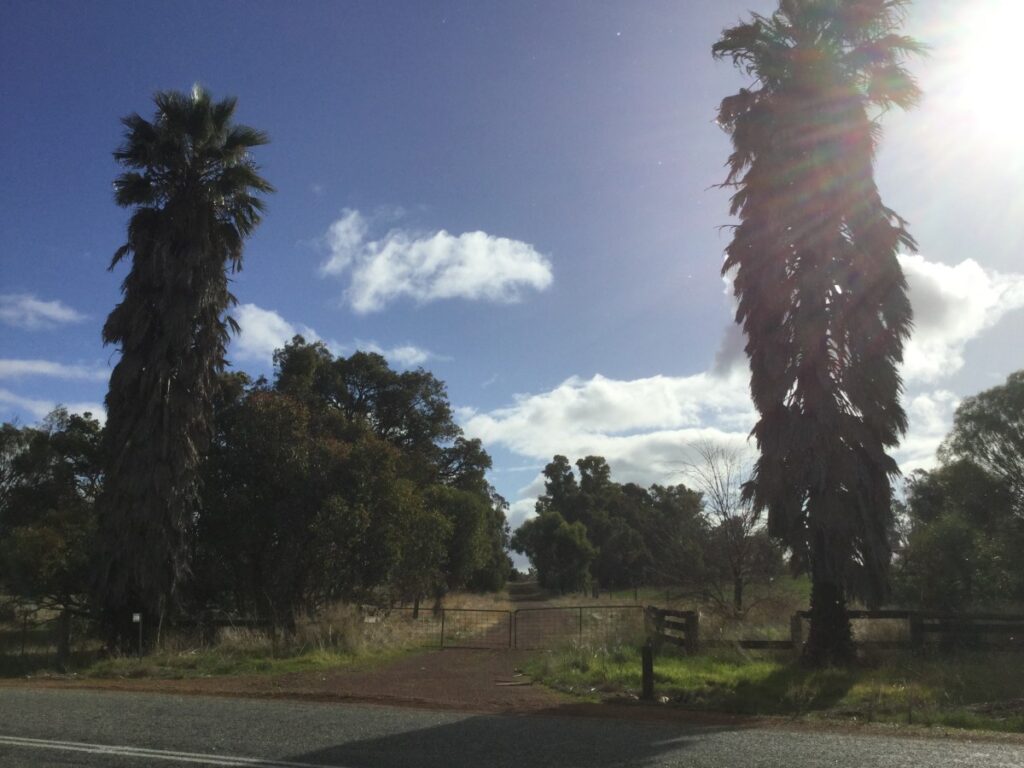
Two things that are pretty typical for rural property entrances in our part of the world are the “grand statement” exotic plants either side, and the relatively ostentatious built structures around the front gate. Judging by the size of the palm trees and the state of disrepair of the wooden fence, I would think this grand statement was originally made by a member of a past generation and that the current owner isn’t as fussed about saying Here I am as his predecessor. It also seems to me that the more recent resident has taken pains to plant some native trees and/or look after his remnant vegetation; both of those are commendable services to Australian biodiversity conservation.
When the post-and-rail structure in the above photo was in its heyday, it would at least have served as an actual fence, although in our part of the world, for reasons of economy, most farm fences are either post and wire, or steel picket and wire. A front gate does need some bracing support, but usually it’s enough to put it between two strainer posts and suspend it directly from them, as is the case at our place. Most elaborate structures around the front gates are just for show. The more snobby people often have tall brick walls either side of their gates that look totally out of place, like the entrance to an industrial estate or a resort. You might know the sort; their houses tend to look like sterile operating theatres inside, or whatever is currently on trend.
On the more creative side, avid DIYers sometimes have at their front gates stonework made from local rocks and their own elbow grease. Arty recyclers will paint drums and add bits and bobs to them so they look like cartoon cows or sheep, and display those by their gatesides for the delight of children and quirky adults. Not all front gate structures say, “Here I am, I am so important, I have made my mark!” but many do, and are more to do with status displays than anything else.
Which brings me to the completely incongruous palm trees in the pictures above. These trees are not native to Australia; and at some point there must have been a fashion for them because in our agricultural areas these are regular features for purposes such as gateside display, or planting near the farmhouse. Maybe at some level it’s a metaphor: Here is the oasis we built in the wilderness.
But in that way of thinking lies the problem. I see it time and again that people get rid of native remnant vegetation and then plant some other tree species from overseas or interstate instead, as if the less it looks like what was naturally there, the better. I’ve heard relatives say that the West Australian eucalypts are boring and not “proper” eucalypts like those from the Eastern States. This is ridiculous to anyone who has spent time really looking at the native forests and woodlands of the Southwest.
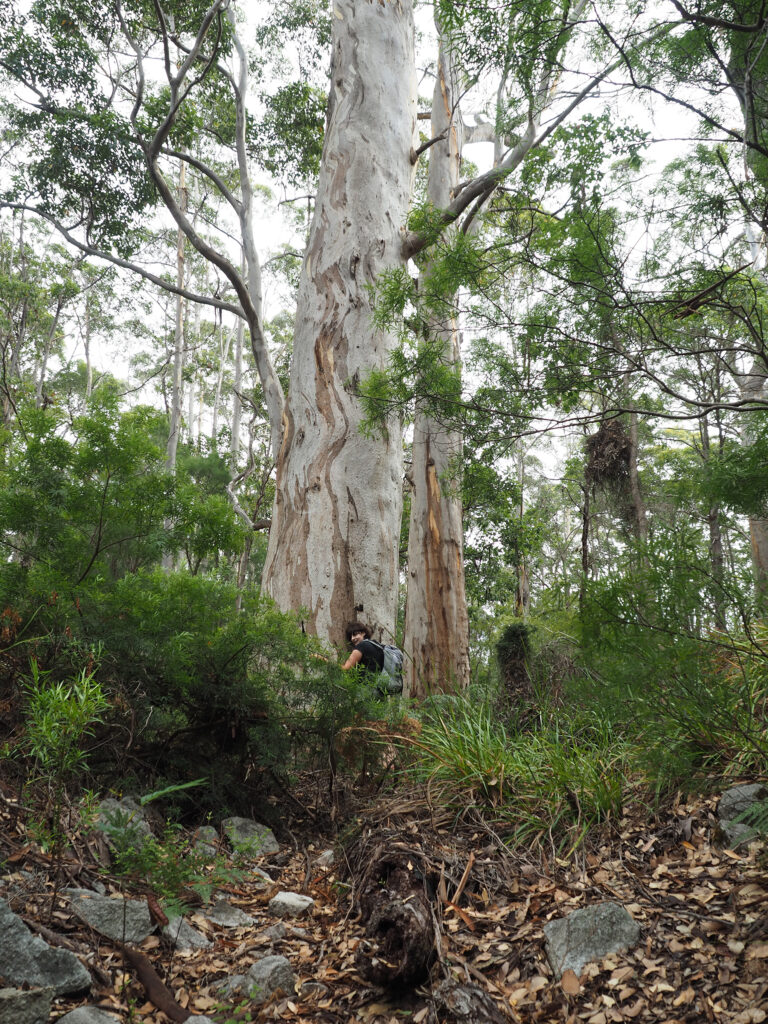
I think many humans just like the idea of changing what is naturally there in a landscape, on top of Europeans bringing their ideas about agriculture everywhere they went in the world instead of adopting local ways of obtaining food.
This is our front gate. Because the land at the front of our place had been bulldozed to make pastures in the 1950s and was an ecological desert, we planted as many native trees and bushes as we could get into the ground around that space, to make habitat for native birds, insects and other wildlife. The planted species mostly aren’t local to our area, because unavailable from revegetation nurseries, and because many local species can’t withstand the harsh windy conditions that characterise the cleared areas. However, many are from the Southwest and make enthusiastically adopted habitat for our local fauna.
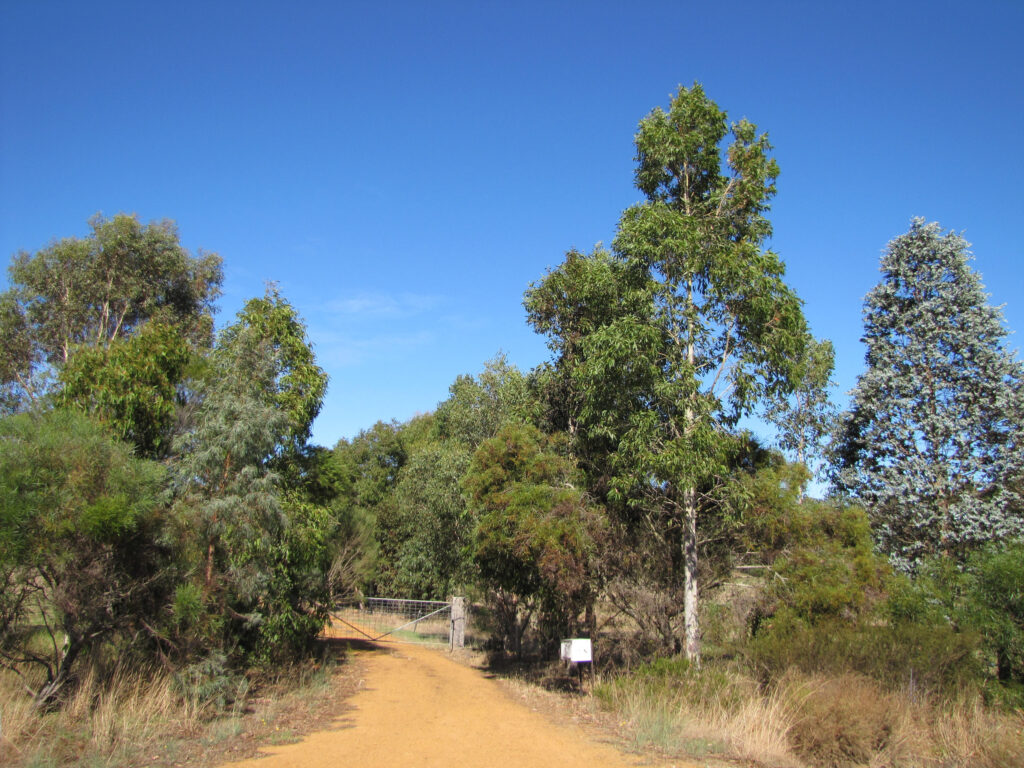
So I guess some of the “pioneer” generation said, “We’ve bulldozed the wilderness to make an oasis, look at these pretty palm trees!” and some of the younger generations say, “They bulldozed the native vegetation and everything that depended on it, let’s do some emergency habitat planting.”
It’s not an easy thing, especially in a locality beset with invasive species, to make new habitat areas. Even the best of those, done by teams of people with a ton of funding and volunteers, will never be even a fraction of the biodiversity of the remnant vegetation still being annihilated on a daily basis. But what else can we do but protest the ecocide, limit our reproduction and consumption, protect what we can, and plant things helpful to the much-abused local wildlife.
A couple of paces from the palm-framed front gate we saw on the road near Williams was another homage to Homo colossus. I do think it’s commendable that people are trying to repurpose industrial objects to stop them going to landfill; in our rural areas, there are many disused microwave ovens going up as mailboxes. (If you are wondering about our own mailbox in the above photo: We were given an old beehive box that was narrower than our own Langstroth hives and therefore couldn’t be used with them, but it did make a great mailbox, capacious enough to take milk deliveries and parcels, and it carries our Honey For Sale sign.)
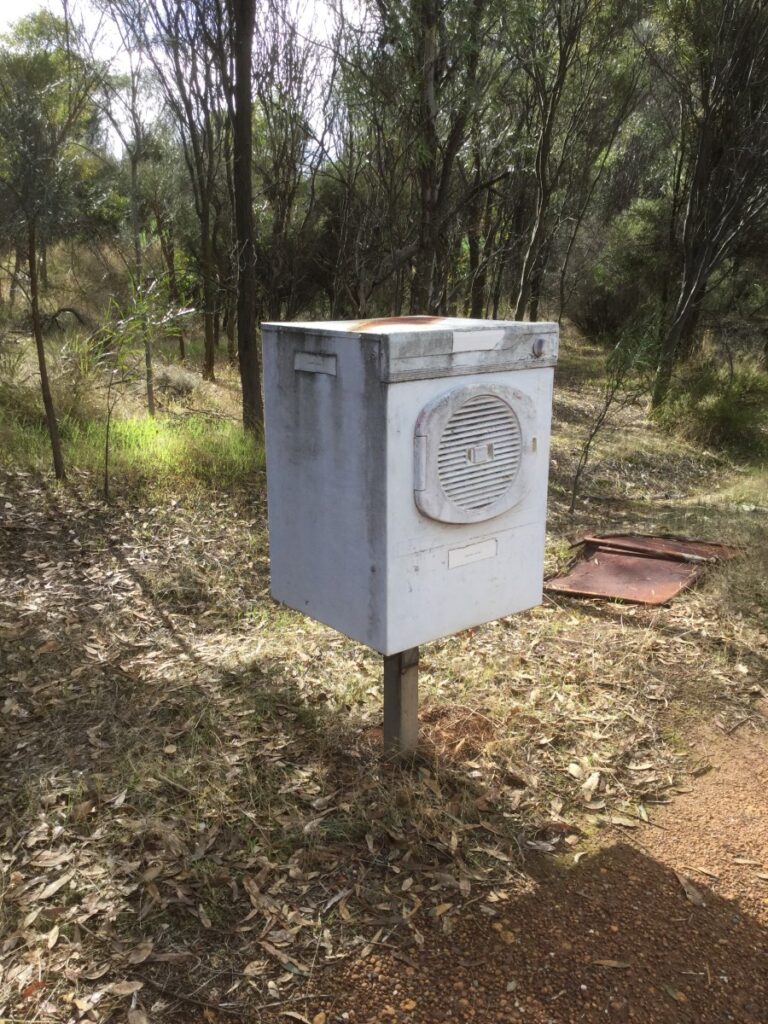
But is the repurposing of whitegoods on roadsides beautiful, or is it a timely reminder of our culture’s insanity? Above is an appliance type I have never even owned, and why on earth would I, living in one of the sunniest and windiest climates in the world? I tell visitors we have a special solar clothes drier – and when they bite, I point at our clothes line, strung between our carport posts and between trees. I find it offensive that in Western Australia we should use fossil fuels to dry clothes, or any kind of electricity. This is so basic; our grandparents all did this; and even when I lived in Europe as a child, clothes were hung in the cellar to dry during snowy seasons.
I find it equally offensive that the primary means of heating water in Perth, one of the sunniest cities in the world, is still fossil fuels: Via electrical and gas water heaters, when the material (i.e. manufacturing/ecocide) investment made would be much better spent on a solar water heater, which at least doesn’t use any electricity for its operation. And “green” electricity is a myth – fossil fuel use hasn’t declined, “renewable” electricity is on top of that and requires destructive mining and fossil fuels to manufacture the collectors, and if you are heating water, it’s much less wasteful to have it heated directly by the sun than to have it heated by electricity coming from solar panels or wind power, especially via long transmission lines, no matter what equivocations are put about on this subject.
Same goes for the idiotic “green” drive to replace existing gas cooktops with electric so they can be hooked up to “green” electricity. It’s yet another ploy to get people to throw their existing appliances into landfill and buy new to make a bundle of cash for industry, this time with the lie that it’s “environmentally responsible.” When you consider the fossil fuel inputs required to make new induction cooktops (and dispose of your old equipment, further trashing the planet), you could be using your existing stove for the rest of your life and be responsible for less carbon dioxide emissions, as well as less additional mining and manufacturing related direct ecocide.
A similar thing happened with so-called “environmentally friendly lightbulbs” that are laden with toxic chemicals like mercury and cost significantly more embodied energy and materials to manufacture than the old Edison bulbs. Any actual electricity savings from them were quickly offset by the trend to use up to a dozen downlights in a room where previously there had only been a single Edison bulb, and by things like some councils deciding to leave street lighting on for longer now they could afford it, causing light pollution problems for wildlife like moths. So the actuality is that the entire thing is less environmentally friendly than the prior system, but painted as “green”. A far greener thing would have been for people to use low-wattage Edisons except for worklights, and to switch the damn things off when not using them, and go to bed soon after sunset instead of sleeping through the daylit early morning, and not light up their houses like Christmas trees and then complain about the electricity bill.
What never seems to make the front page is the need to use LESS – to consume less, to reproduce less, to get back to far lower populations and far lower resource consumption per capita. That would be incompatible with our system of necrocapitalism which demands ever-spiralling population growth, ecocide and consumption, and therefore the consumption and collapse of the planet’s entire biosphere, like a malignant cancer cumulatively sucking all the life out of a body and with the same end.
How many of our mollycoddled Western citizens would consent to get back to the resource and energy consumption of their own grandparents at their age, let alone their great-grandparents? There would be rioting in the streets at the suggestion. A small minority in our culture would be willing to make the required sacrifices – the rest are so brainwashed into the idea of their personal freedumb many won’t even do something simple like wear a mask to reduce the spread of infectious disease in the community – not even when sneezing and coughing themselves. Their own image and convenience is so much more important to them than saving other people from infection with their SARS or influenza or RSV or rhinovirus they are actively shedding through their droplet-dispersed and aerosolised body fluids.
The silver lining to the awful downward spiral of our society and this planet is that eventually these terrible things will stop, not because there is a God in heaven, but because humans will burn in a hell of their own making. The tragedy is that this hell is like a broad-spectrum antibiotic, wiping out much of life on earth – not a targeted removal of the people unwilling to make major changes to their own convenience for the sake of all of life.
♦ ♥ ♦
♦ ♥ ♦
The next photo is of a recently sown crop near Williams, where the farmer has left on stubble from a prior crop to protect soil from erosion, right up to the time of seeding the next crop. The sowing of the crop disturbs the soil and makes it prone to erosion. All industrial cropping areas lose topsoil; this in itself is deeply alarming to anyone who thinks in time frames beyond the next political term.
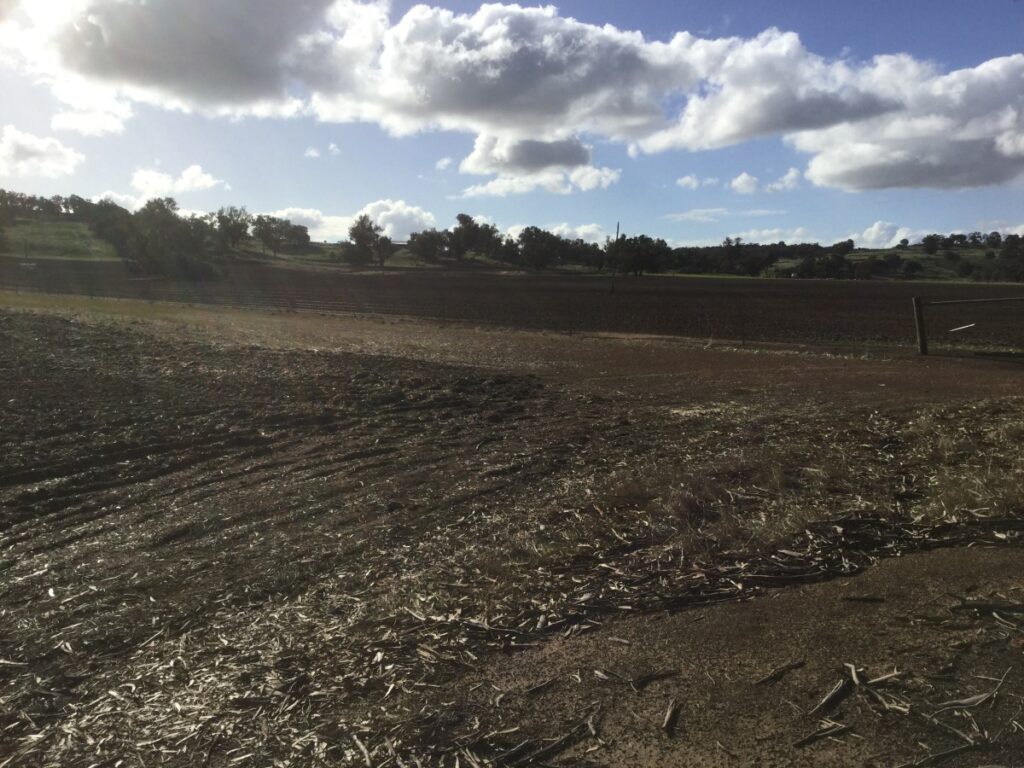
Ironically, one aspect of the widespread use of herbicides in that production system is that it can largely eliminate soil tillage previously required for weed control, and in that application, the saving of the precious topsoil environmentally outweighs the use of the less persistent herbicides – but not to mince words, the whole production system is fundamentally fucked and people should not be farming this way at all. This production system wiped out all the biodiversity of the native ecosystems bulldozed to make fields, and continues to degrade soil and aquatic systems, and to cause more offsite ecocide for the production of fertiliser and machinery and fossil fuels and transport infrastructure .
Also consider: the human population is in overshoot because of these kinds of production systems – like the so-called “Green Revolution” in agriculture, which is about as green as “renewable electricity” – it’s just a pit of ecocide and toxification, powered by fossil fuels, and powering the ever-accelerating destruction and consumption all around.
I will return to the topic of agriculture in more detail in a later instalment, when I cover the return trip from Perth through agricultural areas further inland. For this I have many photographs and much to discuss, including how exactly zero of the main recommendations for landscape rehabilitation we made in the mid-90s were systemically implemented, and what those recommendations were.
This is the pipeline on the Collie-Williams Road, which takes water from coastal areas and distributes them to the towns of inland agricultural areas.
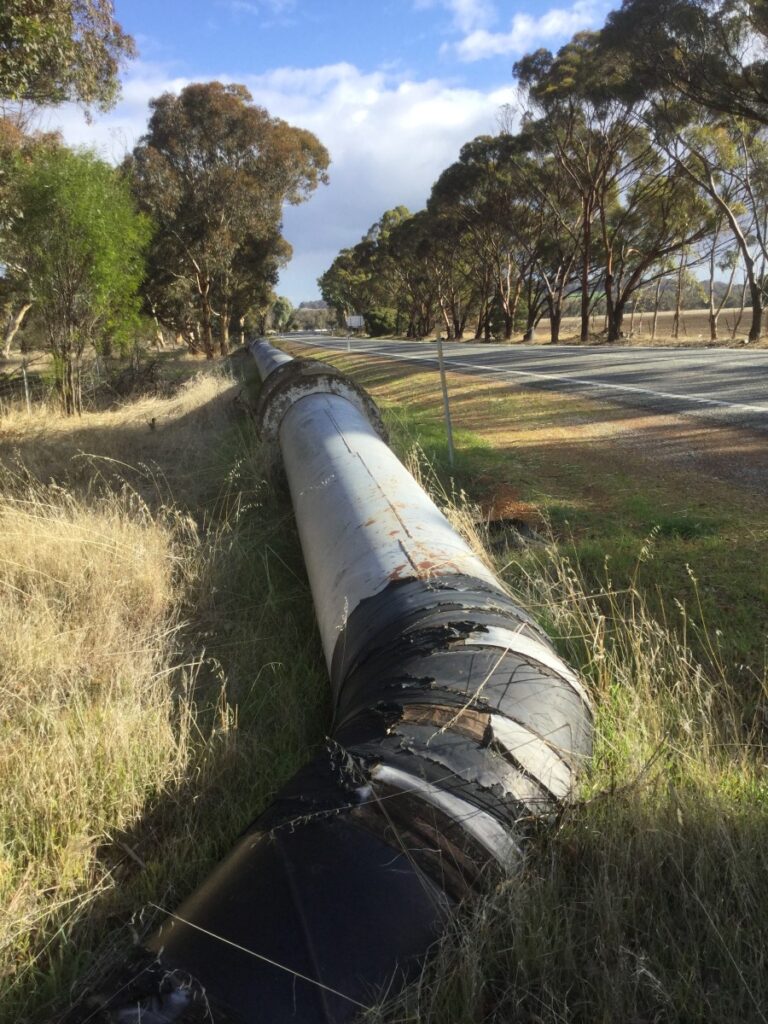
This is one example of how humans continue to not live within the natural constraints of the areas they settle, and to take from other living things the very basics of life that should be shared by all, not monopolised by just our species. Humans have the strange idea that if water or anything else isn’t used by humans, it is wasted. That is profound ecological ignorance and anthropocentrism – two qualities that define Homo colossus; even those working in the area of natural resource management, the very title of which illustrates the attitude: The earth is a supermarket, or as the band XTC put it:
And all the world is biscuit-shaped
It’s just for me to feed my face
Try to suggest to anyone that it’s not OK for people to monopolise water or anything else in that way, and you will be met with outrage, such is our sense of entitlement and our lack of concern for the rest of the species who share the planet with us and are, because of how we live, being wiped off the planet at a rate of ~200 species every day.
The next photograph was taken in the town of Williams. It is the cultural norm in the West not just to go everywhere by car, but to do it in the most wasteful and showy ones you can afford. The most popular cars in Australia are 4WDs and SUVs – and usually, those are around 70% of cars we encounter on the roads on the South Coast. Check out the predominant type of car in the first car park we came across.
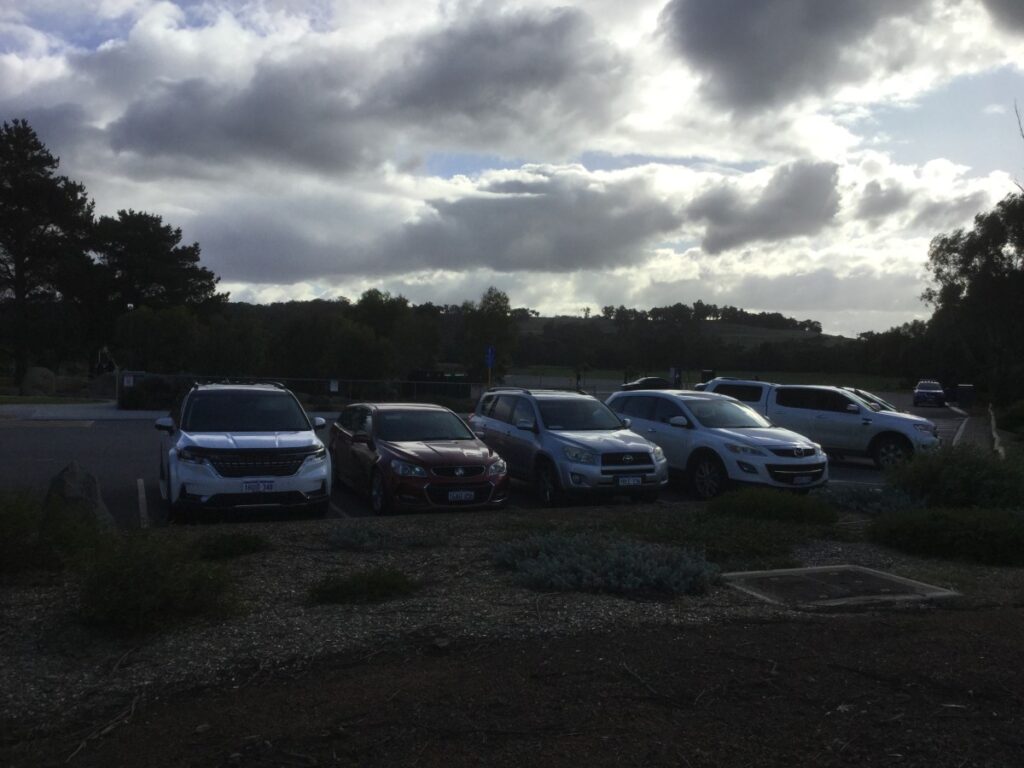
The fuel consumption of the average car on the road in Australia hasn’t improved since the 1960s because as fuel efficiency has gone up, people have just bought bigger cars. It’s Jevons Paradox, just as in our earlier example of multiple LEDs now taking the place of single Edison bulbs in a room.
And people have bought bigger cars (and built bigger houses to the limits of their budgets) despite the fact that scientists have been warning about the consequences of fossil fuel burning for over half a century, and people are still doing this now despite the increasing demonstrations of catastrophic weather. The majority will continue to buy and drive big fuel-guzzling cars until they can no longer afford it financially, and will then be voting for whichever party promises to subsidise their poor consumer choices.
Meanwhile, people like this regularly laugh at us for driving a fuel-efficient supermini, which more than caters for the requirements of my husband and myself and does the highway limit like all the bigger cars on half the fuel (but we don’t often drive at the highway limit anymore to make that fuel go even further). A particularly inane relative once described our car as a “pizza-delivery vehicle” and of course drives a shiny pseudophallus to make that all-important statement. Even EVs are often just social statements about the alleged superiority of their owners, while taking nearly twice the resources and embodied energy to make than a supermini, and using more fuel energy than those do per mile.
When you think that carbon dioxide emissions from cars could have been reduced to less than half in Australia by now had people simply chosen to drive small fuel-efficient vehicles, and to share those whenever possible, it makes you despair. And of course, that was not enough; the entire car culture needed throwing out, indeed should never have begun, along with all the other profligate ways we are using energy compared to people even 100 years ago. What we have sown, we are now reaping.
♦ ♥ ♦
We will finish off today with some relatively sane photos from a relatively natural area. By the time we had spent three hours in a machine driving through scalped landscapes, we needed a sanity break and spent two hours walking the Balmoral Track in the State Forest on the outskirts of the Perth Metropolitan Area.
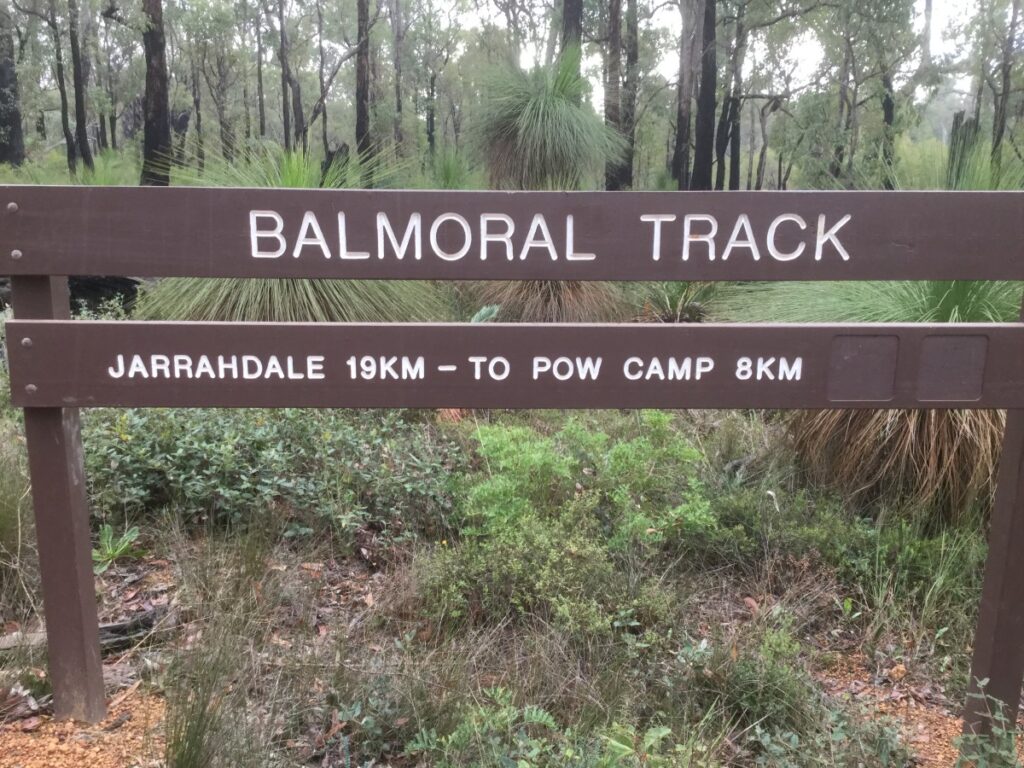
I have lived off-grid for over a decade and don’t see a town more than once a week; additionally we spend most of our spare time away from home hiking in remote and lovely parts of the South Coast’s remaining wilderness. This makes time in broadacre agricultural areas and cities hit us very hard. It’s a bit like when you usually go many months without watching TV news and then one day you catch an episode: Completely gobsmacking. You feel like an alien who is observing something heinous from the outside. You wonder how what you see can possibly be real, and how anyone could have chosen to do these terrible things and think themselves sane.
I was born into this culture the same way anyone is born into a cult, and the cult thinking did not agree with me; neither did our culture’s cruelty and violence against one other and other living things. Spending time in remote areas in the Italian Alps as a child showed me the difference between a Green Revolution landscape and a natural landscape that nobody had pushed over or planted. Coming to Australia at age 11 I was astonished by the biodiversity in the uncleared areas and heartbroken by seeing them obliterated in front of me. Entire landscapes have disappeared forever, along with their former inhabitants who, not being human, apparently count for nothing; it continues every day. Hardly anyone mentions it in the public discourse.
What is left of wild Gondwana is to me like a cathedral, and I have written my own versions of devotionals after hiking there. I don’t feel I could be sane without spending time in these natural places, away from the insanity of Homo colossus.
The State Forest on the outskirts of Perth is a place I once lived for a year as a young adult, and is where my husband grew up. It was good to go walking in the Darling Range Jarrah Forest again for the first time in over a decade.
This is not a pristine forest; it has been heavily logged over the last two centuries and has therefore lost its Ents, become impoverished, suffered wildlife decline and species extinctions, and has changed greatly in character over what it was before civilisation found these shores. It has been burnt too frequently, too hot, on too large a scale and at the wrong time by natural resource management bureaucracies seeking to reduce wildfire hazards and to optimise for log and woodchip production. Aboriginal cultural burning was done smaller-scale, cooler, at the right times of year, and for the purposes of looking after the animal and plant species they depended on for food.
Yet still, a significant amount of native Australian species hang on here, and if our industrial culture stopped using it for resource extraction and returned it to Indigenous management, it could stop deteriorating further and begin to heal.
Even an exploited, degraded native forest is orders of magnitude better ecologically than the largely bulldozed agricultural countryside – but this is no excuse for our culture to keep exploiting and degrading these forests.
The biota here are things of beauty, like the banksia seed cone above, or the enormous fungal fruiting bodies below.
Below we have Dryandra not too far away from flowering.
There were granite monadnock ecosystems within the Balmoral forest; with seasonal pools of water in the depressions.
Here we stopped and reflected for a while before turning back and retracing our steps. We were bracing ourselves for our descent into the state capital half an hour further on. You can accompany us there next time.
A song to take us out, in loving memory of Sinéad O’Connor, whose voice helped teach me to carry my own and whose righteous anger encouraged me too to stand up and fight against the never-ending injustice and corruption in our society. She is now returning to the Earth, as all of us who love this Earth and fight against the abuse of it will return to the Earth that cradled us. We are stardust constantly rearranging, and love is there with us like a candle in the darkness.
An Irish folk song in which love of a place is expressed as love of a person, and vice versa. ♥

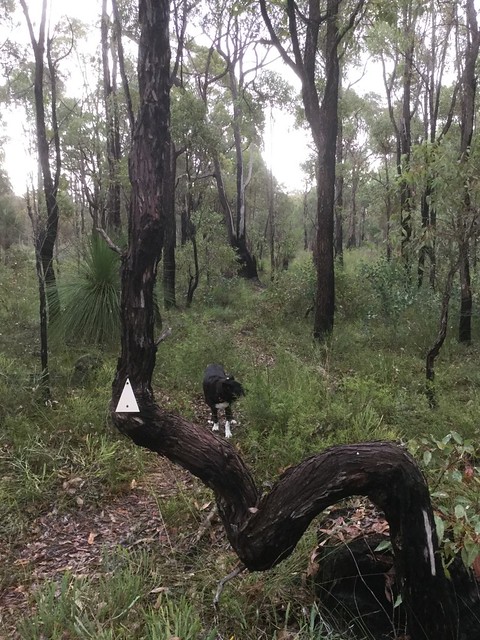


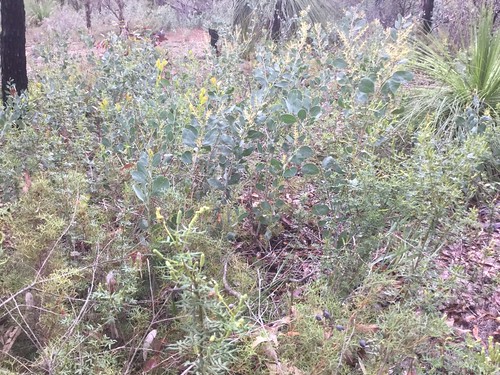

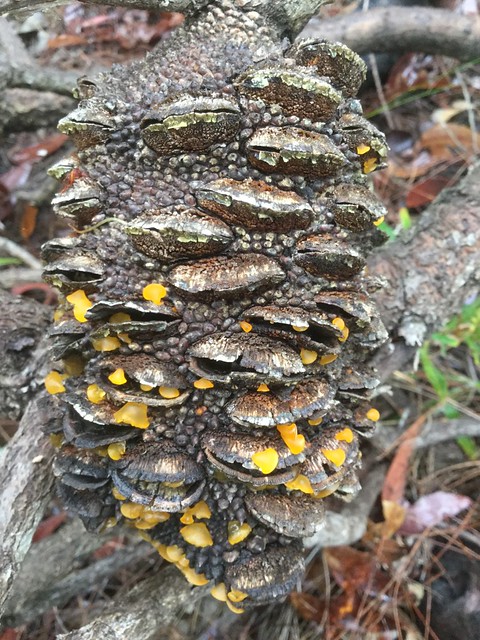



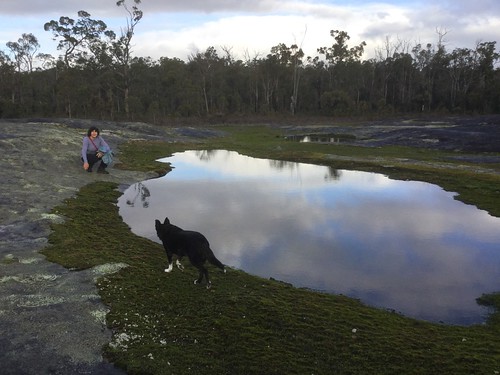
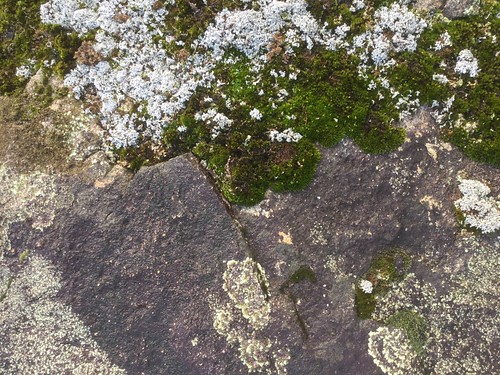
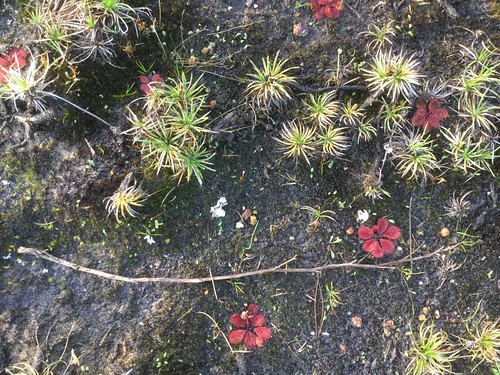
A lovely essay. So different from my native Missouri, USA, yet so many overlapping stories of our foolishness.
It’s the same fundamental playbook anywhere there’s necrocapitalism etc.
So lovely to hear from you, Jeff! Sending greetings to your donkeys too.♥
How are you doing? I nearly mentioned you in the piece when I referenced hypermiling. Always think of you when we are out and about doing 90 instead of 110. And we see more!
Beautifully articulated. A sad microcosm of the planet. The wild places fewer and fewer. The developed areas more and bigger.
And nothing done to address it on a systemic level, decades later, despite all the talk. It’s just like your post on the steps of dealing with an environmental issue: Start by declaring a Centre for Excellence etc. That is funny in the same way Irish comedian Dave Allen was funny; because it was far closer to the truth than the myths the majority make and believe about it.
We knew what needed doing in the mid-90s, the will was there amongst grass-roots people, but the “higher-ups” didn’t support it. I can’t drive through places like this without feeling the sting that it could have looked so much better 30 years later; instead it has all degraded further.
Three episodes and I’m not even in Perth yet. And I’ve barely warmed up on agriculture. The majority of that, I have saved to go with pictures of the return trip further inland. It’s extraordinary how many bad things there are to report from my 24 hours of hinterland tourism. And I absolutely need to talk about these things; the things many people don’t want you to mention and the mainstream ignoring of which has been our doom, and far more unfairly, the doom of countless non-humans, right down to extinction.